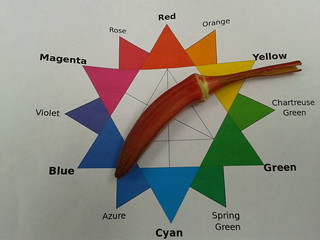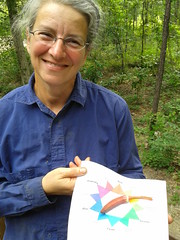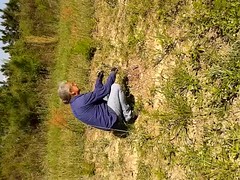Okra color wheel, and Gretchen:


Gretchen and the okra
Pictures by John S. Quarterman for Okra Paradise Farms,
Lowndes County, Georgia, 20 June 2013.
-jsq
Scorched a bit in the prescribed burn a few months ago, and another that was outside the fire break:
Bushy:
Continue reading
 Fruit bushes and trees: blueberry, crabapple, fig, pomegranite, and olive.
Fruit bushes and trees: blueberry, crabapple, fig, pomegranite, and olive.
Sixteen blueberries: Continue reading